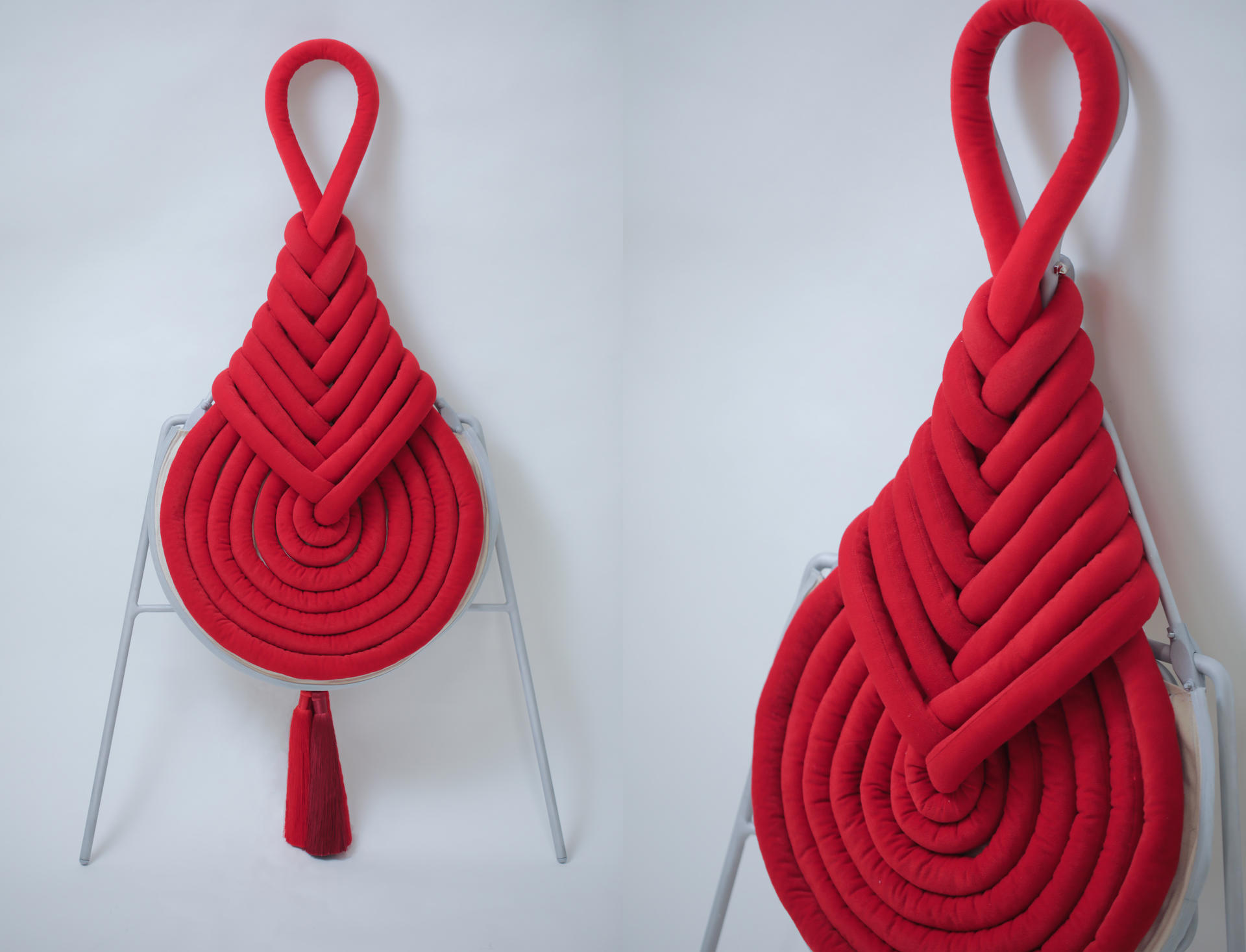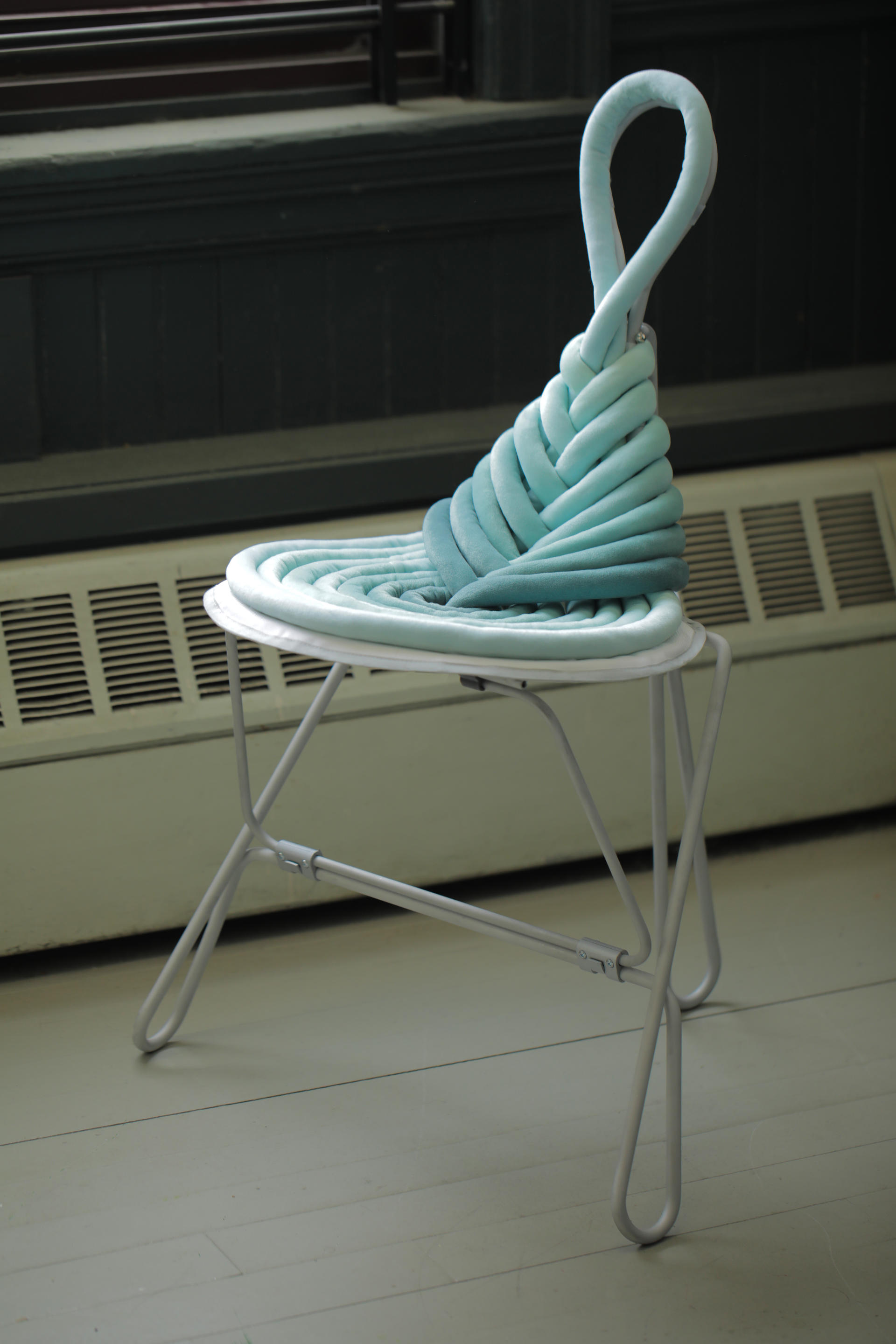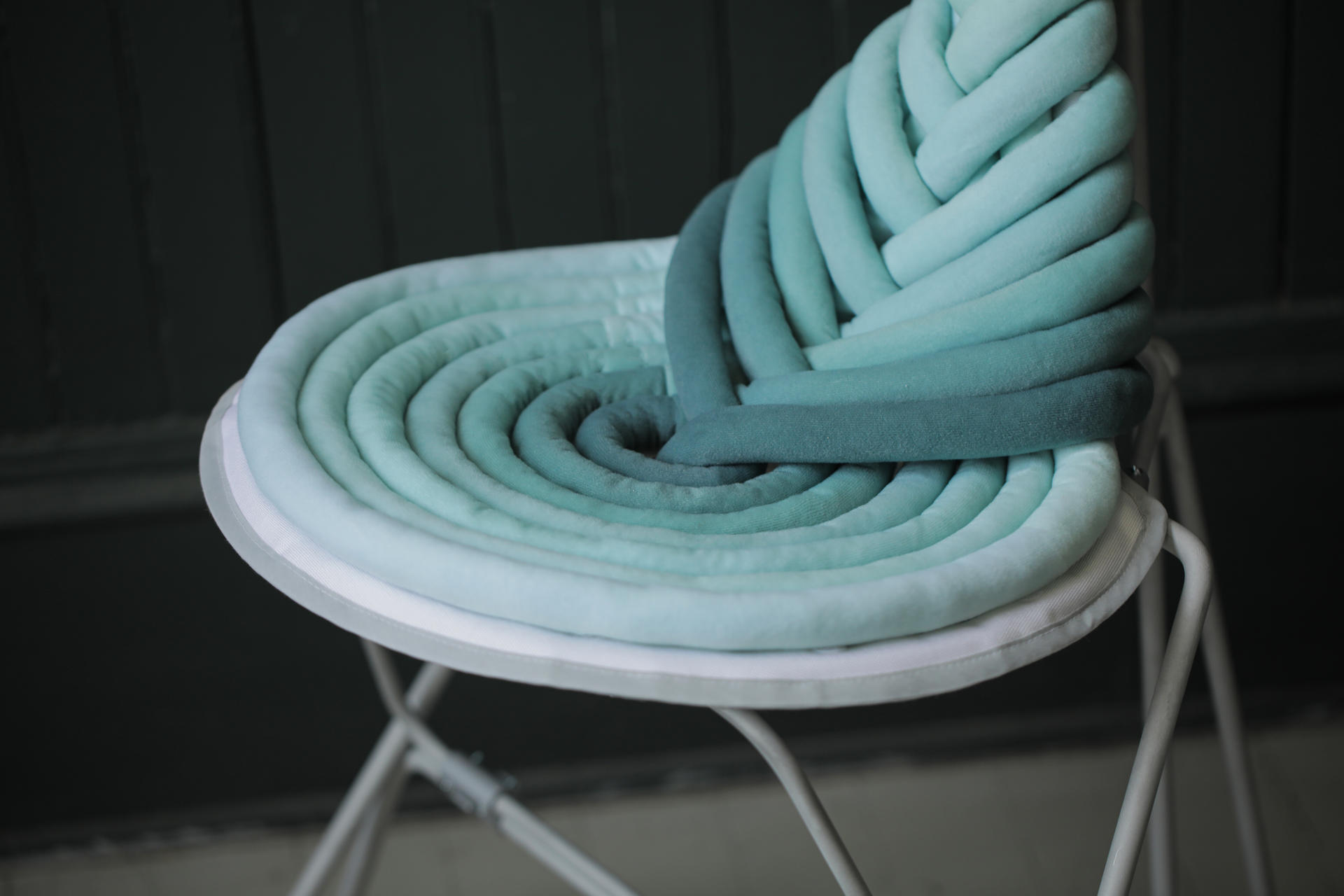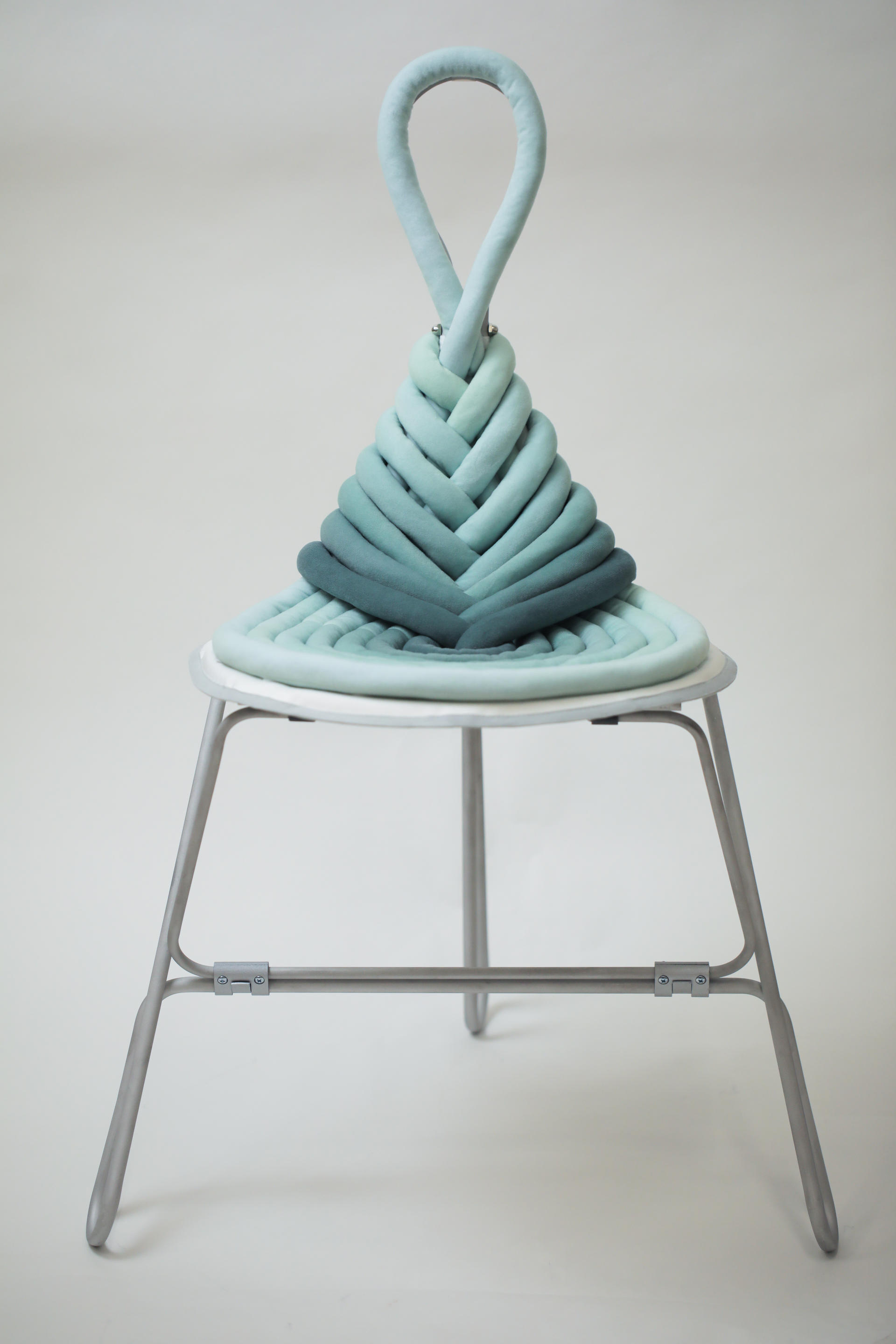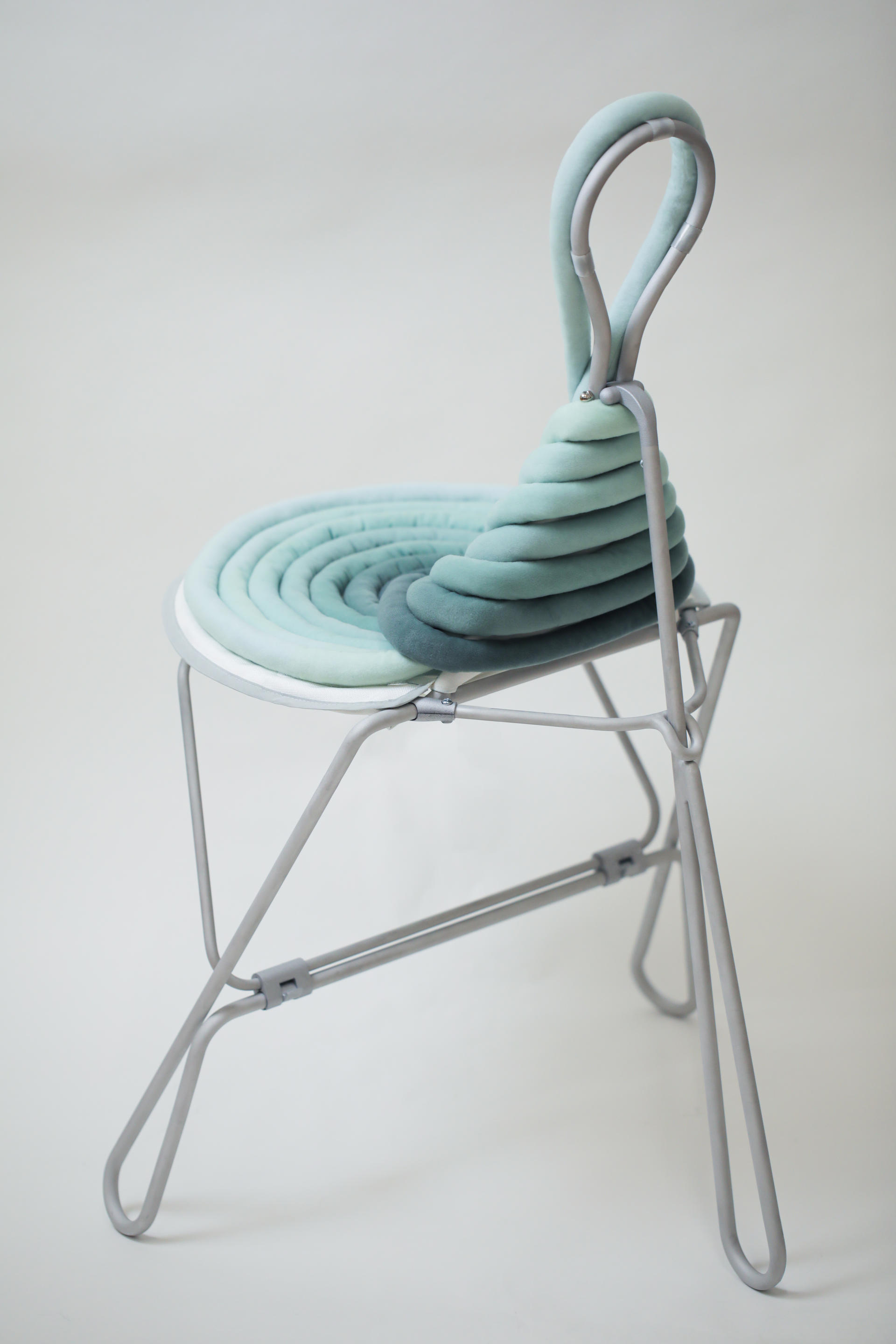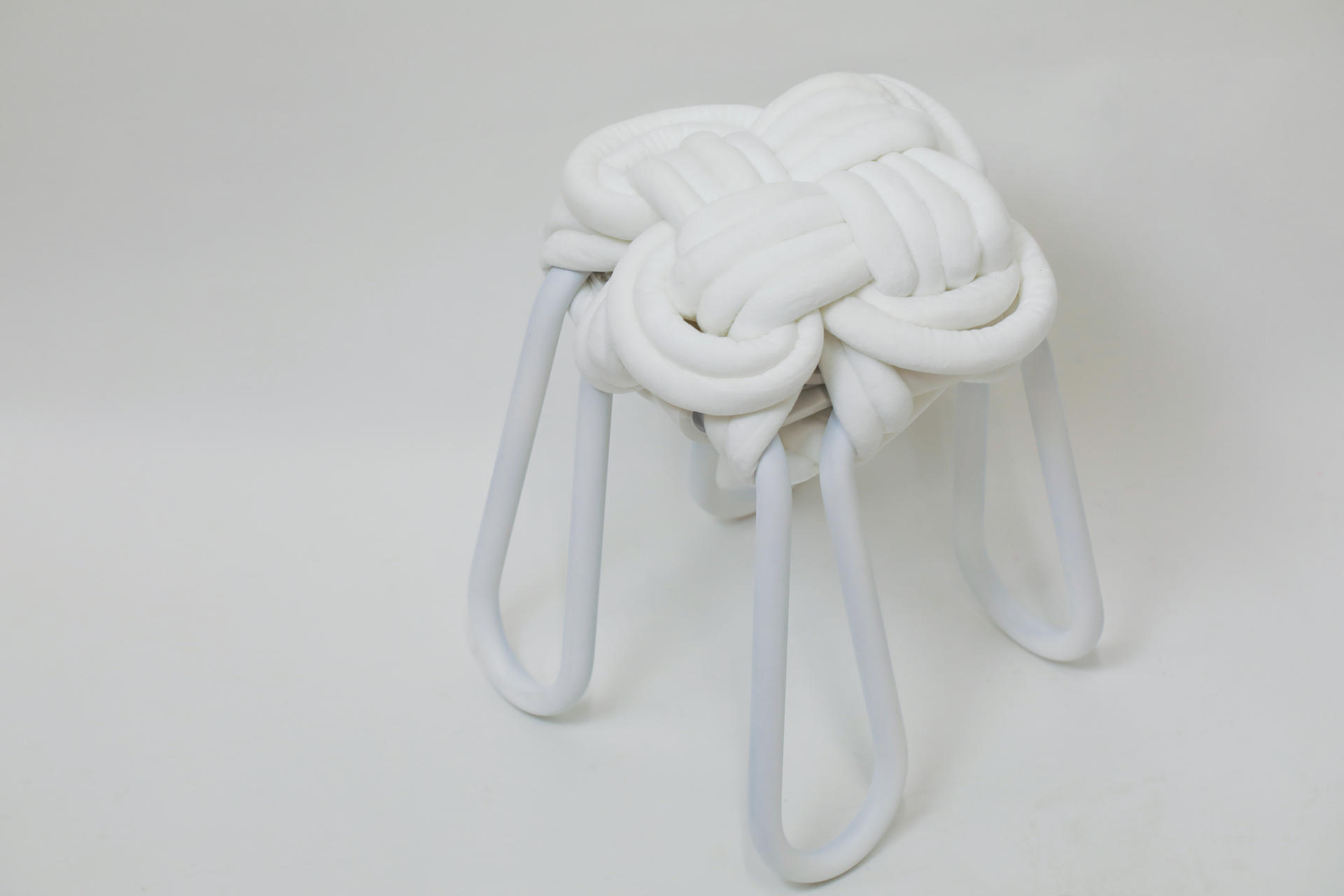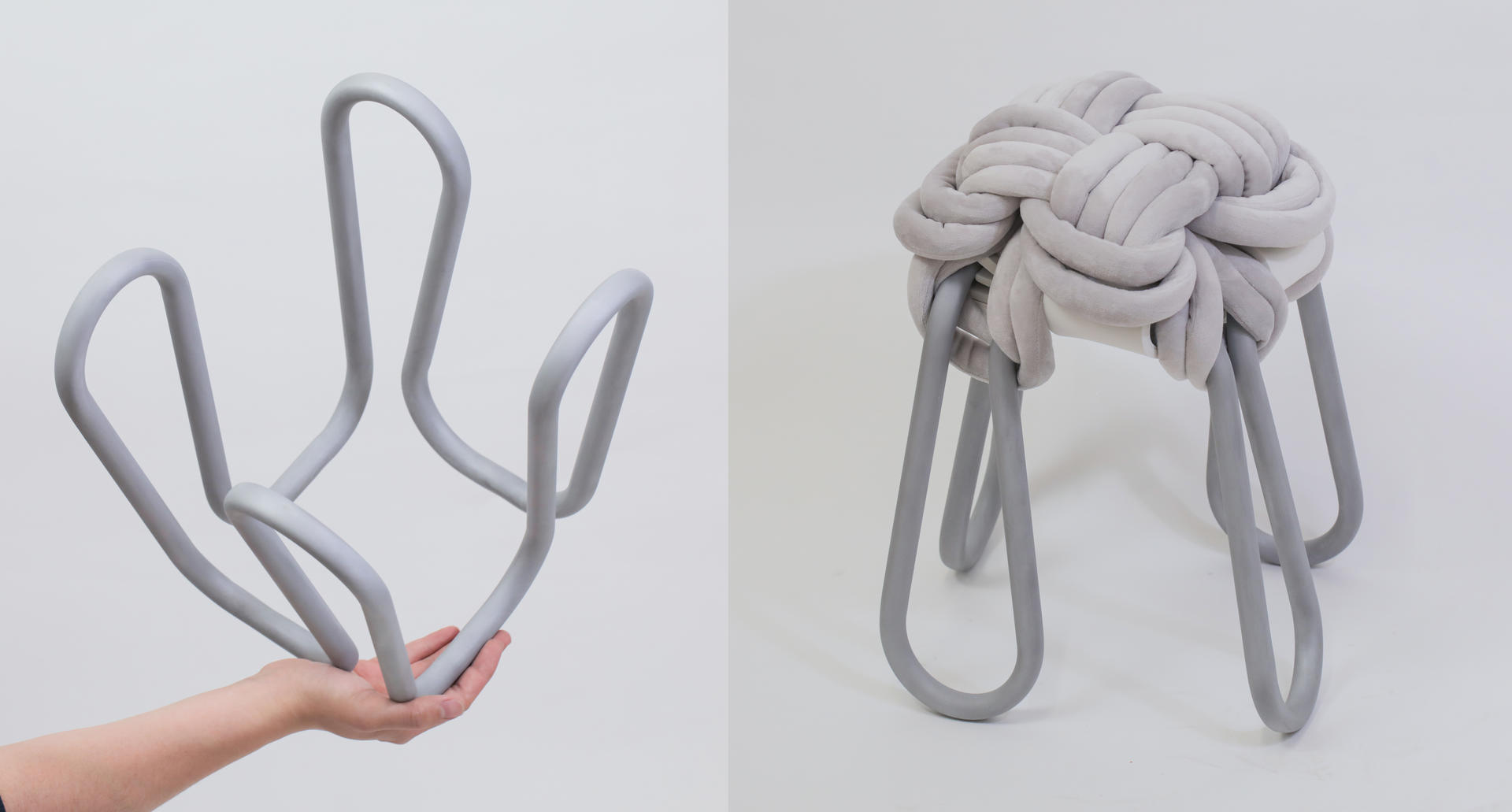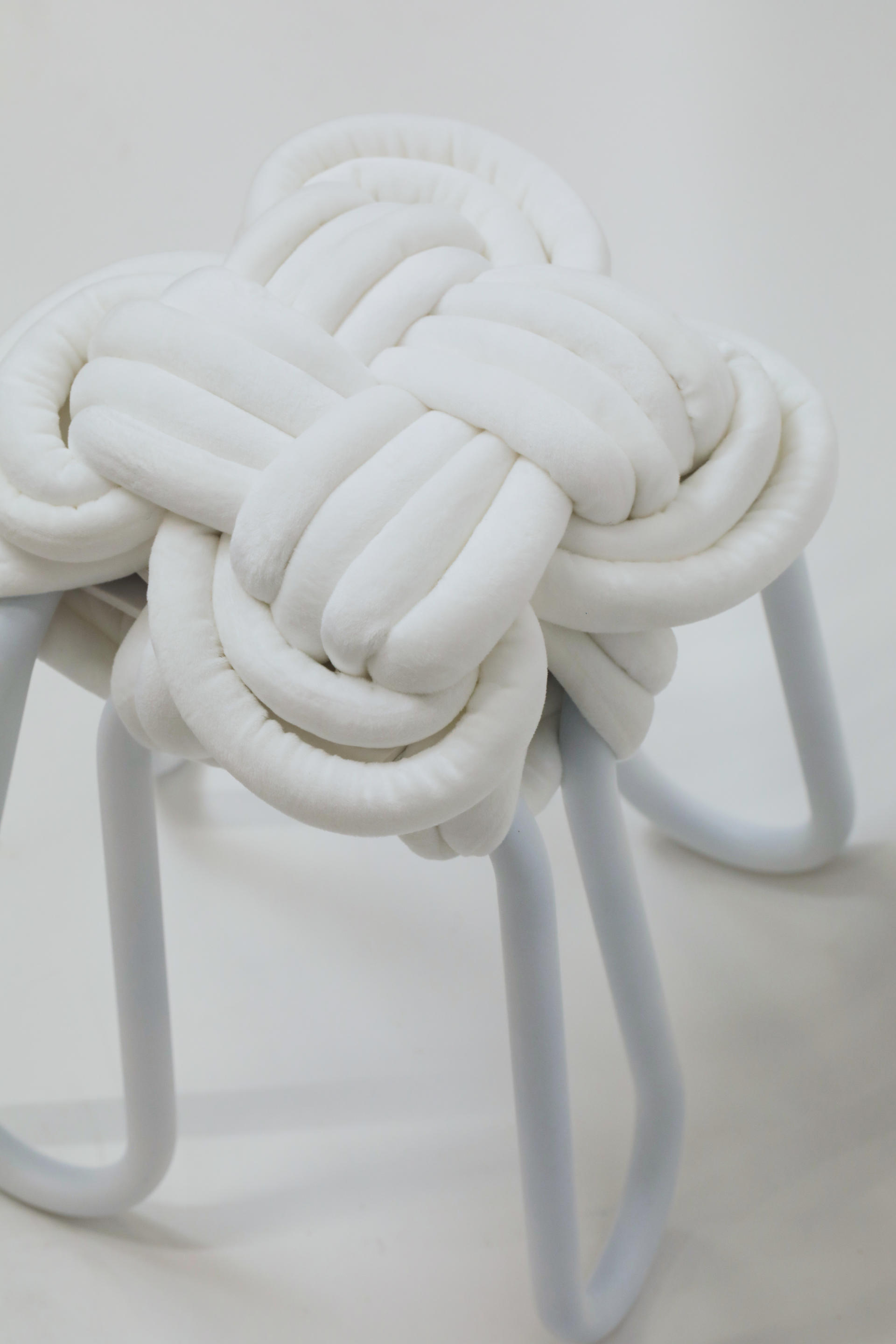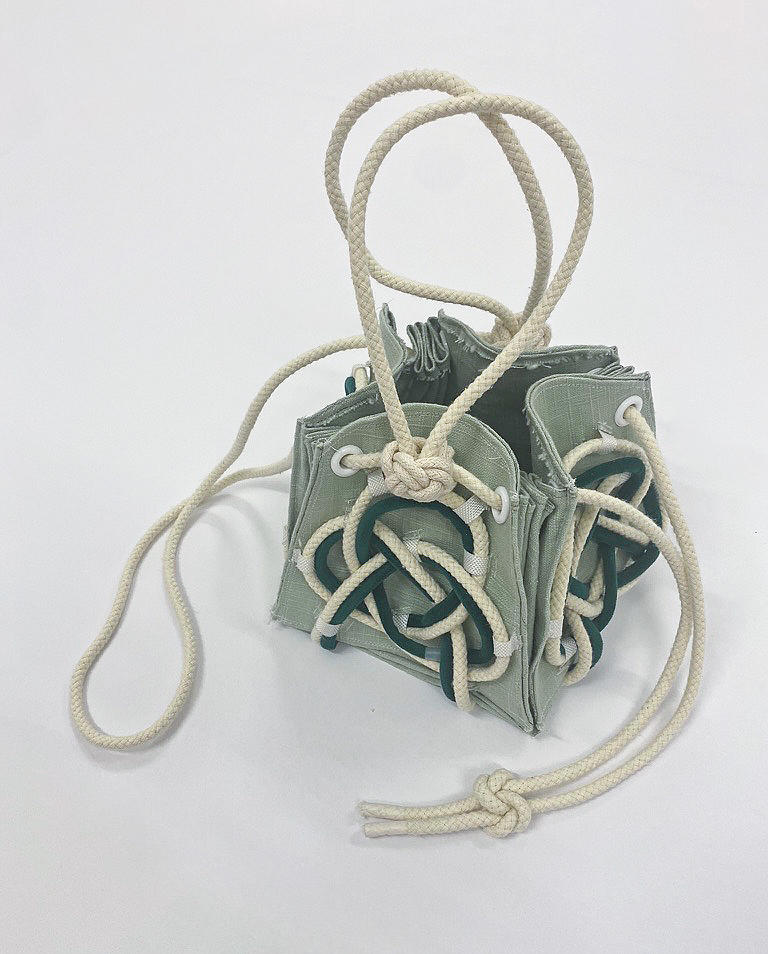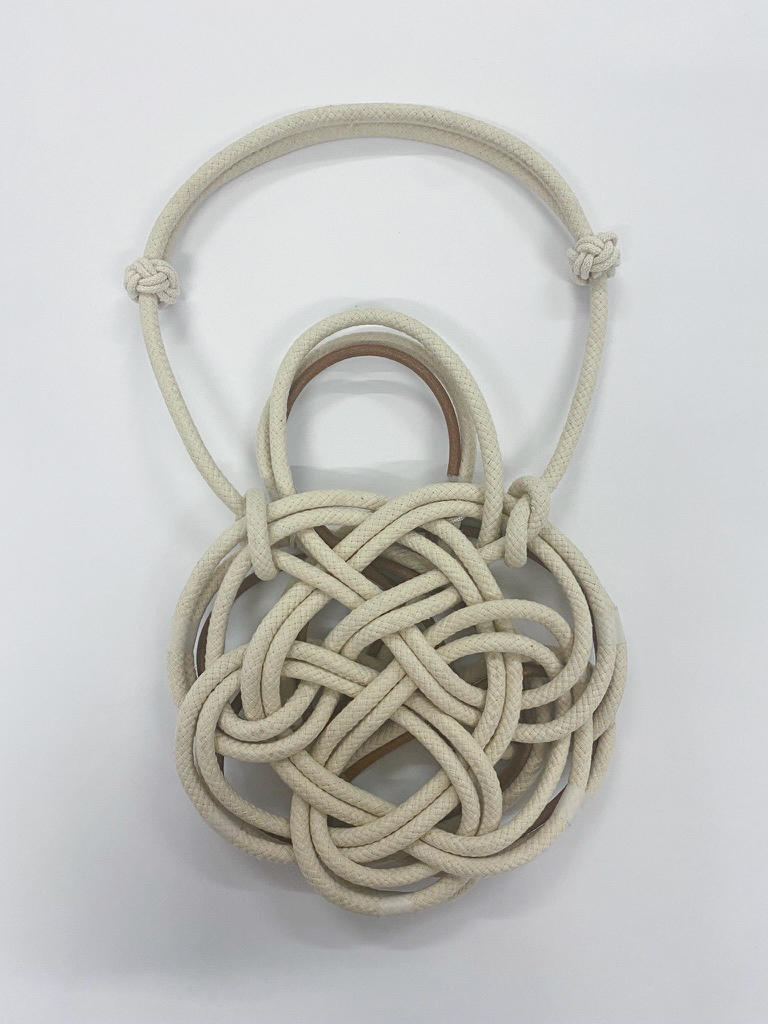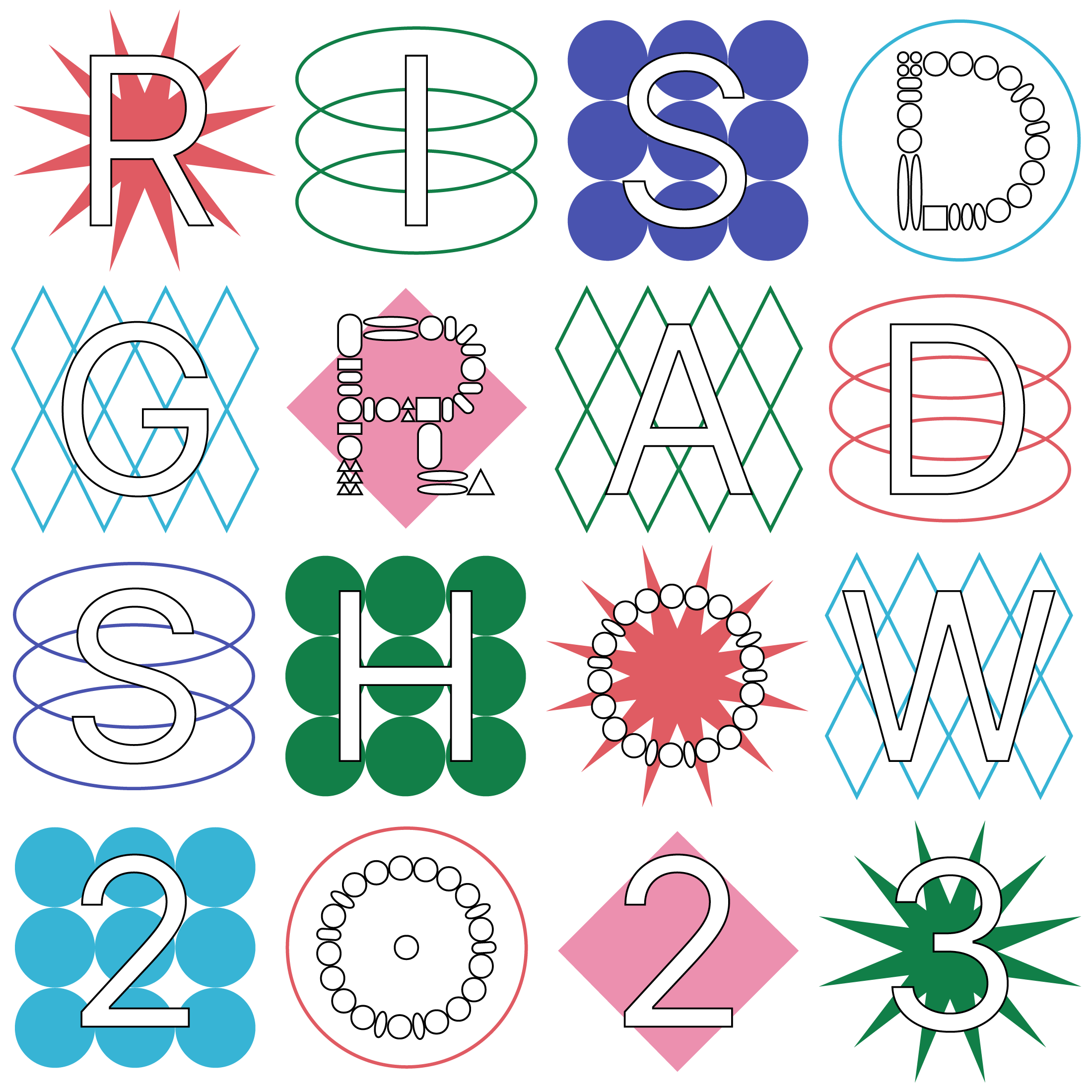Take it from the wall
The Pipa Knot Chair is a folding chair that can be hung on the wall as a decorative object meanwhile as a piece of functional furniture. The Pipa Knot is a unique Chinese knot that is based on the Figure 8 shape named after the Pipa, a traditional Chinese musical instrument with a similar shape.
The grand, red Panchang knot is a familiar sight within many Chinese homes, adorning the walls and symbolizing good fortune. However, my intention is to extend its role beyond being mere decor. I envision transforming this iconic knot into a functional piece of furniture. By shifting it from wall to floor, it becomes an interactive and practical part of daily life. The knotting experience is embedded in the self-assembly process. Through the friendly designed diagram, users can effortlessly assemble the chair in 20 mins, meanwhile customization of the rope becomes an option for users to make their own design.
